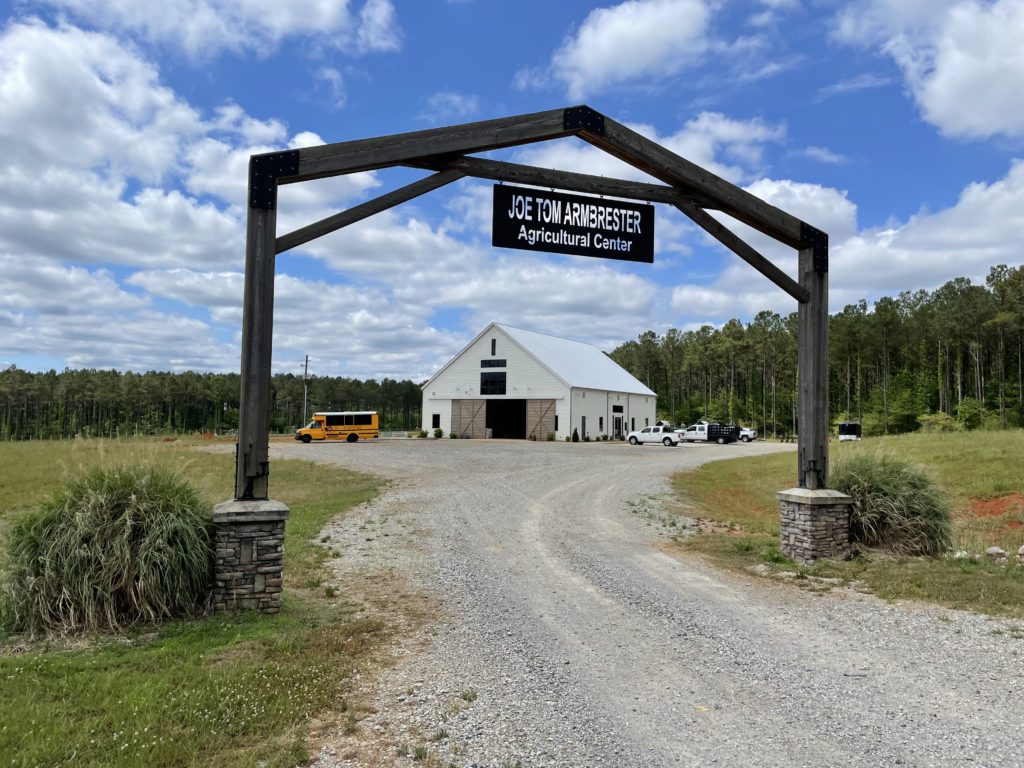Ag Center Offers New Opportunities For AIDB Students

By Mary Wilson
Planting peppers. Collecting eggs. Learning to fix tractors and farm implements.
Thanks to the new Joe Tom Armbrester (JTA) Agricultural Center, students enrolled at Alabama Institute for Deaf and Blind (AIDB) enjoy these experiences while learning life skills.
Built on 100 acres adjacent to AIDB, the JTA officially opened in September 2019. However, because of the pandemic, teachers and students haven’t fully utilized the space for an entire academic year — until now.
“We cleared about 30 acres and have prioritized what is most important because there is so much potential here,” said Rachel Chastain, a transition teacher at AIDB’s Helen Keller School (HKS). “We started from scratch, and our students have been involved in the entire process of making this farm accessible.”
Along with HKS, the center is a hub for agriculture classes at the Alabama School for the Deaf (ASD) and the Alabama School for the Blind.
The site’s pristine teaching barn with its bright white siding includes a classroom and kitchen for processing produce and eggs. Laying chickens rule the roost in a pair of roomy coops. Sheep and calves graze on pasture, while raised beds and fields burst with fruits and vegetables.
“In spring 2022, we used plasticulture for the first time,” Chastain said. “It has numerous agricultural benefits, but I like the plastic for my students because it creates visual contrast, and the green plants really pop. Plus, farmers in our community use this. Students will tell me about farms they’ve ridden past where they’ve seen this same kind of thing.”
An anonymous donor gave $1 million to create the ag center in memory of Joe Tom Armbrester, who passed away in 2015. He was a well-known and well-respected farmer in Talladega County, and his wife, Jan, taught art at ASD for 30 years.
“Uncle Joe Tom was a lifelong learner, and I know he’d be proud of what’s going on here and the technology we’re implementing,” said Matt Armbrester, who is starting his fourth year as JTA coordinator. “In today’s society, students are so far removed from farming. We need to teach kids where their food comes from; how important agriculture is; and the science, math and technology that’s behind it all.”
Classes that come through JTA learn about the agricultural uses of unmanned aerial systems, or drones. Students also enjoy a robot mower that maneuvers around raised beds near the barn.
The farm allows students to practice life skills in a different environment while learning about food production.
“I had a student with Down syndrome; he hated any handwriting task in the classroom and did not want to cut with scissors,” Chastain said. “But he loved being outside at the farm, so we taught him to use pruning shears. He would try writing ID tags for plants. He finally practiced those skills willingly.”
Since JTA opened, Chastain said she’s seen her students’ quality of life improve because they’re more active and more willing to eat nutritious food if they helped grow it.
“People ask me if I think my students are going to graduate and get jobs in agriculture, and the reality is that they probably aren’t,” she said. “But agriculture is engaging. It gets students outside. They love the animals and plants. Being at JTA helps them work on transitioning from a school environment to anywhere in a public setting, like a public park. They become more independent, and it gives them opportunities to be advocates for themselves.”
Learn more about the JTA by visiting aidb.org/page/307.
